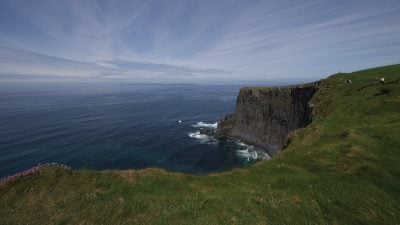Home / UK & Europe / Discover Stately Homes and Leg…

Discover Stately Homes and Legendary Castles on an England Tour
The very essence of England is encapsulated in its historical buildings. So, why not visit a few on your England tour and get to know how life once was in this country.
When you think of England, what comes to mind as being typically British? You might come up with English pubs, fish and chips, London taxis, Tower Bridge, driving on the wrong side of the road, afternoon tea, the Queen.
I suggest that stately homes also fit the bill. So what is a stately home exactly? Here are two definitions, “A large, old house that usually has beautiful furniture, decorations, and gardens,” and, “An English country house is a large house or mansion in the English countryside, the full-time residence for the landed gentry that used to rule rural Britain.” Fair enough, I agree with these definitions. Today, there are hundreds of stately homes in existence.
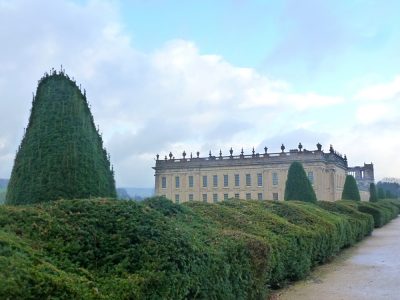
One hears of so many stately home owners, because of the expense of the upkeep, having to close them down or open them to the public to reduce costs. Spare a thought for how these homes must have been in their heyday. Consider this list of staff at one of England’s better known stately homes. The staff at Chatsworth House at this time consisted of a butler, under-butler, groom of the chambers, valet, three footmen, a housekeeper, the Duchess’ maid, eleven housemaids, two sewing women, a cook, two kitchen maids, a vegetable maid, two or three scullery maids, two stillroom maids, a dairy maid, six laundry maids, and the Duchess’ secretary. All of these thirty-eight or thirty-nine people lived in the house. Daily staff included the odd job man, upholsterer, scullery-maid, two scrubbing women, laundry porter, steam boiler man, coal man, two porter’s lodge attendants, two night firemen, night porter, two window cleaners, and a team of joiners, plumbers, and electricians. Wow! No wonder stately homes were expensive to maintain.
If you have a desire to visit one or two stately homes on your England tour, you need to decide on which ones to choose. So, now, I would like to offer a small selection of homes, which are some of the better-known ones, to consider visiting.
OUTSTANDING STATELY HOMES
Highclere Castle
Let’s start off with two that have been made famous by popular TV shows. If you watched Downton Abbey (surely you did), then you need to know that the series was filmed at Highclere Castle in Hampshire. It is the county seat of the Earl of Carnarvon, who was actually one of two people to discover the tomb of King Tut in Egypt. Highclere was built in its present form in 1878 and is an imposingly large structure. You can visit the state rooms, the castle bedrooms, and take in an Egyptian exhibition.
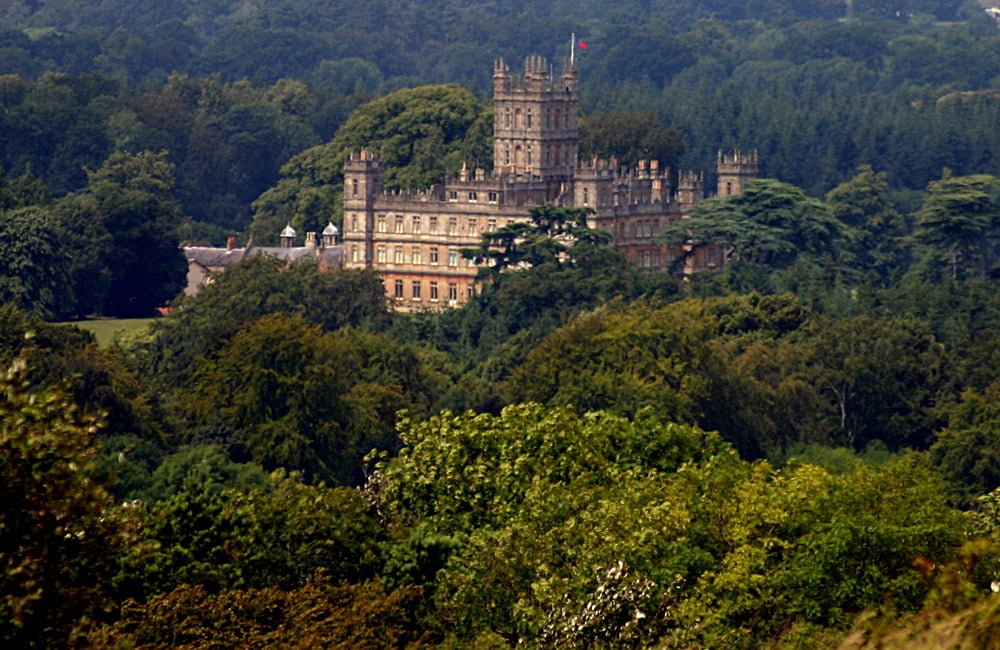
Castle Howard
The other home is Castle Howard in Yorkshire, although not a true castle. It was erected on the site of a former military castle and built between 1699 and 1712 for the 3rd Earl of Carlisle. If you can remember the tv version of Evelyn Waugh’s Brideshead Revisited, you will recognize Castle Howard. Most of the house is open to the public. Apart from the main building, it has extensive and diverse gardens. There is a large formal garden immediately behind the house where peacocks roam. The arboretum’s important collection of 6,000 trees and plants from across the world are to be found in the parkland surrounding the house.
Blenheim Palace
Blenheim Palace in Oxfordshire will always be associated with Winston Churchill, who was born there in 1874. It is one of England’s largest houses and was originally built in the early 1700s. Set in very extensive grounds, you can tour the state rooms and also visit the permanent Churchill exhibition, which is a journey of his life through photographs, letters, and artifacts. You can take a buggy tour here with a guide around the grounds.
Harewood House
Harewood House in Yorkshire belongs to the Lascelles family, who is related to the British Royal Family. It contains an interesting collection of paintings from the Italian Renaissance, family portraits by Reynolds, and modern art collected by the father of the current owner. As well as tours of the house and grounds, Harewood House has more than 100 acres of land which includes a Himalayan garden, an educational bird garden, an adventure playground, and the historic All Saints Church with its tombs.

Longleat House
Longleat House in Wiltshire claims to be the first stately home to be opened to the public. Built in the 1500s, it is widely regarded as one of the finest examples of Elizabethan architecture in the UK. The rooms have a collection of 16th to 19th Century furnishings and art. The Great Hall is Elizabethan and decorated with tapestries and paintings. The seven libraries contain 40,000 books and the State Drawing Room houses a collection of Italian paintings. The owner, the Marquess of Bath, has personally painted dozens of murals which can be seen here. Longleat is also known for its adjacent Safari Park which contains everything from giraffes to llamas.
Chatsworth House
Chatsworth House, the home of the Duke of Devonshire located in Derbyshire, was used in the movie adaptation of Jane Austen’s Pride and Prejudice. It is renowned for its art collection, from ancient Roman and Egyptian sculptures to works by Rembrandt, Reynolds, Freud, and other well-known painters. There are over 30 rooms to explore including the state rooms. The gardens are well worth visiting with their sculptures, maze, and rock gardens.
Chartwell House
Chartwell House in Kent was the Churchill family home from 1922, and the place where Sir Winston resided (outside of Downing Street) until the end of his life. The rooms remain much the same as when he lived here. There are pictures, books, and personal mementos involving his career. The house contains 130 paintings by Churchill, and every winter, there is a new temporary exhibition about Churchill. The gardens include lakes designed by him as well as the kitchen garden.
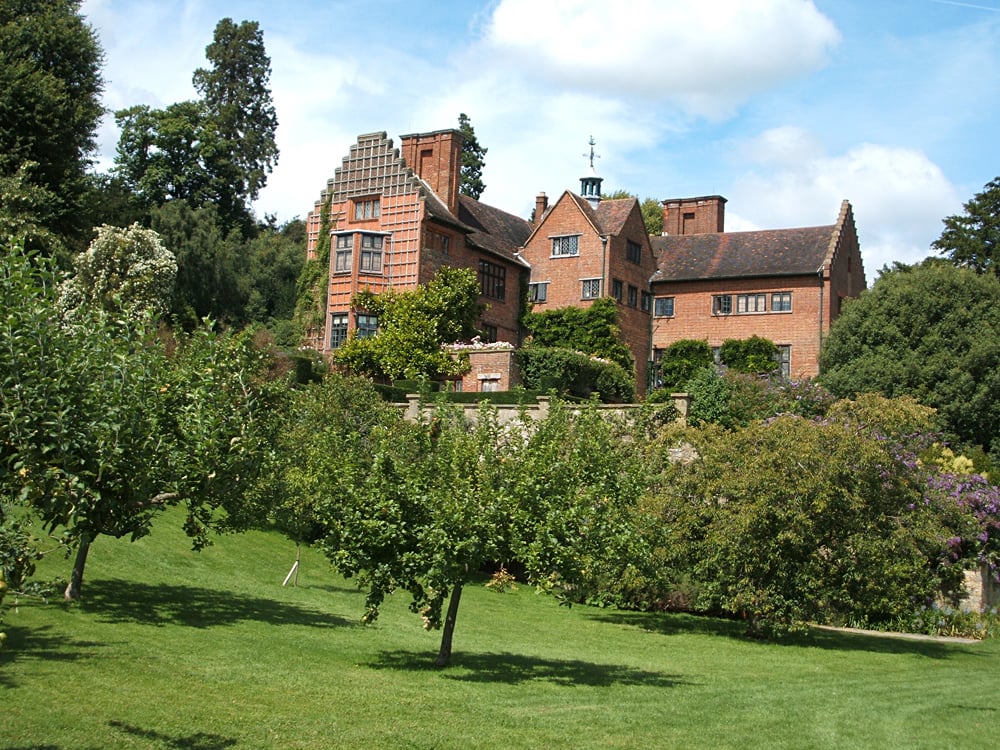
Sissinghurst Castle
Sissinghurst Castle, again in Kent, is where Vita Sackville-West, the poet and writer, and Harold Nicholson, the diplomat and author, lived in the 1930s. Sissinghurst has a collection of paper dolls, model theatre puppets, and other artifacts. The Sissinghurst estate is situated in 460 acres of beautiful countryside – a fascinating place to spot native wildlife all year round.
Waddesdon Manor
Waddesdon Manor in Buckinghamshire is built in the French Renaissance style in the form of a chateau. Before this house was bequeathed to the National Trust, it was owned by the Rothschild family. This beautiful house has been the location for many movies and tv shows, which isn’t surprising. Again, it contains an exceptional collection of art, with over 15,000 pieces including works by Reynolds and Gainsborough. The gardens are beautifully landscaped and include pavilions and an aviary.
Woburn Abbey
Woburn Abbey in Bedfordshire has been the home of the Earls and Dukes of Bedford, one of England’s most powerful families, since the 1620s. In its 22 rooms, you will find 18th Century French and English furniture, silver and gold collections, porcelain, and other privately-collected artifacts. The art collection of the Duke of Bedford is among the best in private hands, and covers a wide range of art including 250 paintings – some of which include works by Gainsborough, Rembrandt, Reynolds, Rubens, Van Dyck, Canaletto, and Velasquez. As an additional attraction, there is a safari park located in the grounds which contains species such as white rhino, elephants, tigers, and black bears.

OUTSTANDING ENGLISH CASTLES
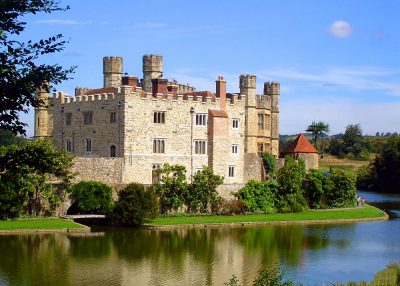
You may have heard the expression “An Englishman’s home is his castle.” Sometimes real castles can be dwelling places but I think the real thing is something else. What exactly is a castle by definition? How about, “A large building or group of buildings fortified against attack with thick walls, battlements, towers, and in many cases a moat.” Castles have been around for many centuries and I understand there are more than 800 castles in England alone, with about 300 being in a reasonable state of existence. Now, in all fairness, some of the castles mentioned below could also be termed stately homes.
Let’s leave out royal residences such as Windsor and Balmoral Castles and look at castles which are fully open to the public, which you might like to take in on your England tour.
Tower of London
In London, there is the castle of all castles, the Tower of London. I won’t go into a full detailed account of the merits of visiting this place, but let’s try briefly to whet your appetite. It was built in 1066 and was used as a prison (inmates have included Queen Elizabeth I, Sir Walter Raleigh, Thomas Cromwell, Guy Fawkes, Samuel Pepys, the notorious Kray Twins in 1952, and of course, Anne Boleyn) and a royal residence, both perfectly suited for the purpose, as the tower has defensive walls and a moat. It has also been home to an armoury, a treasury, the Royal Mint, a public records office, and the Crown Jewels of England. And then, of course, there are the Beefeater guards and the Ravens. Legend has it that the Tower will fall if the six resident ravens leave. Today, there are seven, so all is well.
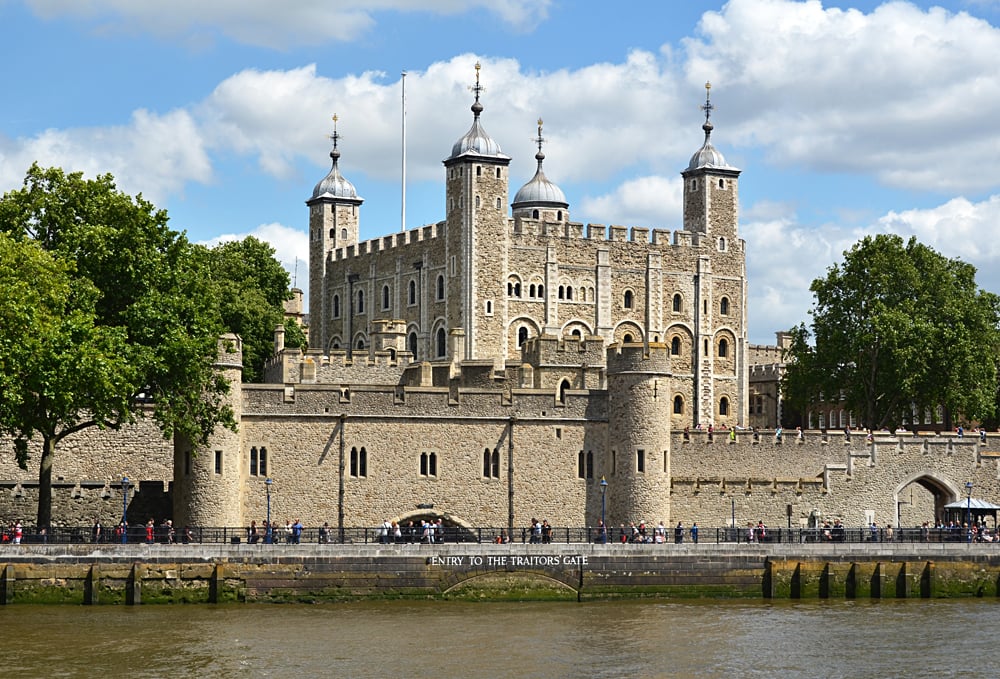
Leeds Castle
Leeds Castle in Kent was a palace used by Henry VIII. This stone castle, built in 1278, stands on islands within a lake. You can take a tour of the castle including the dining room, banquet hall, library, and drawing room. Don’t miss the Gatehouse Exhibition of 900 years of the castle’s history and the Dog Collar Museum (yes, dog collars), the largest collection of them in the world.
Warwick Castle
Warwick Castle is a medieval castle in Warwickshire. It has a fantastic location on top of a hill overlooking the River Avon. It was built by William the Conqueror in 1068 and used as a fortress and prison (King Edward IV was incarcerated here) until the early 17th century when it was converted into a country house. Attractions include a maze, the Time Tower which explains the history of the castle, and the castle dungeon which tells stories of torture and witches. There is also the trebuchet, which is the largest working siege machine in the world, a huge catapult which hurled large rocks.
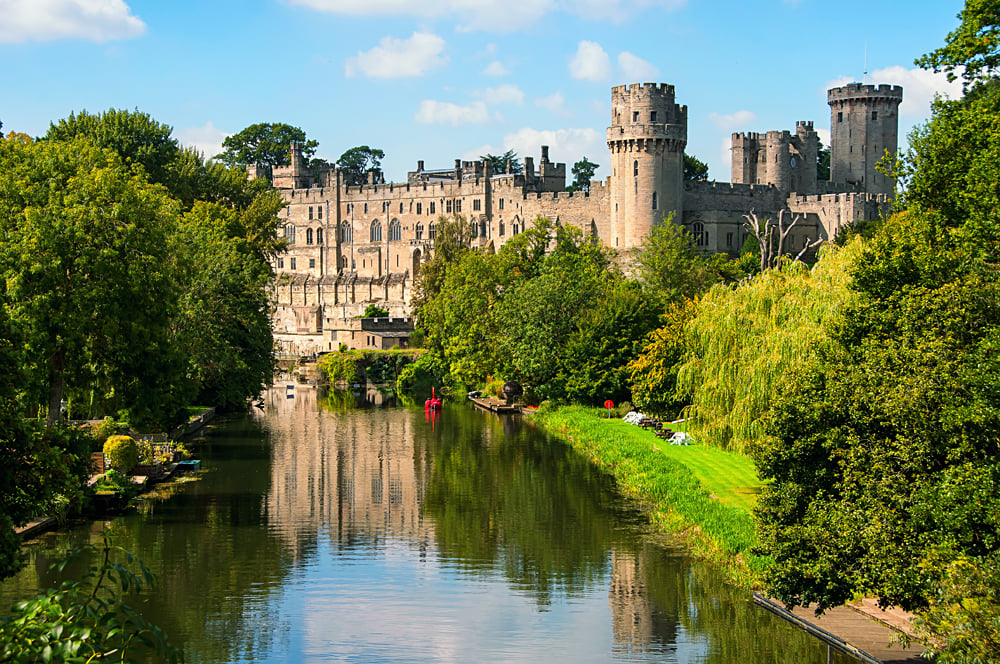
Lincoln Castle
Lincoln Castle in Lincolnshire was built during the 11th century by William the Conqueror, serving as a fortress and a prison. It is in a good state of repair and is one of the most impressive Norman castles in England. There are great views of the city of Lincoln and surrounding area from the castle walls. Housed in the castle is one of the four surviving originals of the Magna Carta, which dates back to 1215, along with an exhibition about the same.
Arundel Castle
Arundel Castle is a restored medieval castle in Sussex, dating back to 1042. It has been, over time, the hereditary home of several families and is currently owned by the Duke of Norfolk. The Castle houses a wonderful collection of furniture dating back to the 16th century, tapestries, clocks, and portraits by Van Dyck, Gainsborough, Reynolds, Canaletto, and others. There is an exhibit of the personal possessions of Mary, Queen of Scots and a selection of historical, religious and heraldic items from the Duke of Norfolk’s own collection.
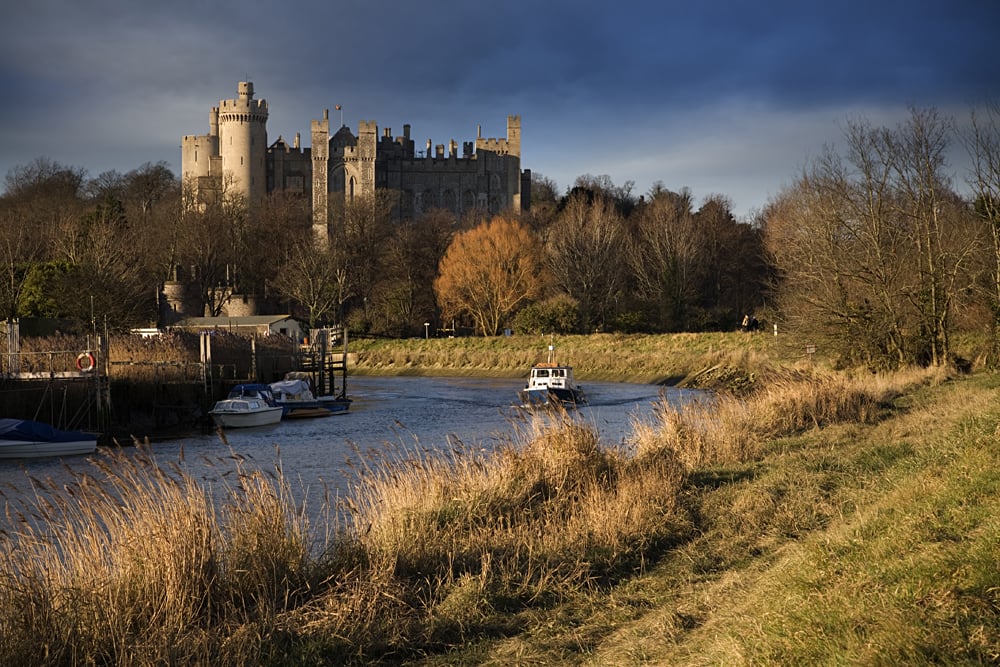
Herstmonceux Castle
Herstmonceux Castle is a castle built originally in the 11th century, again in Sussex. It will be of special interest to Canadians, as, in 1993, it was purchased for Queen’s University in Kingston, Ontario as a gift from Alfred and Isabel Bader, the Canadian philanthropists. It is used by the Bader International Study Centre of Queen’s University. The grounds have an amazing collection of flora and fauna which include wild orchids, lizards, birds, and deer. Events take place from time to time including theatre productions, operatic performances, and vintage antique fairs.
Tintagel Castle
Tintagel Castle, a medieval fortress situated high up on a rocky promontory in Cornwall, dates back to the 13th century. However, excavations have revealed that the origins of the site go back to the late Roman period. Tintagel’s major claim to fame is its associations with the legends concerning King Arthur (of the Knights of the Round Table fame). It is supposed to be the place where he was born. There is an exhibition of artifacts discovered at the site, plus books which illustrate the castle’s literary connections.
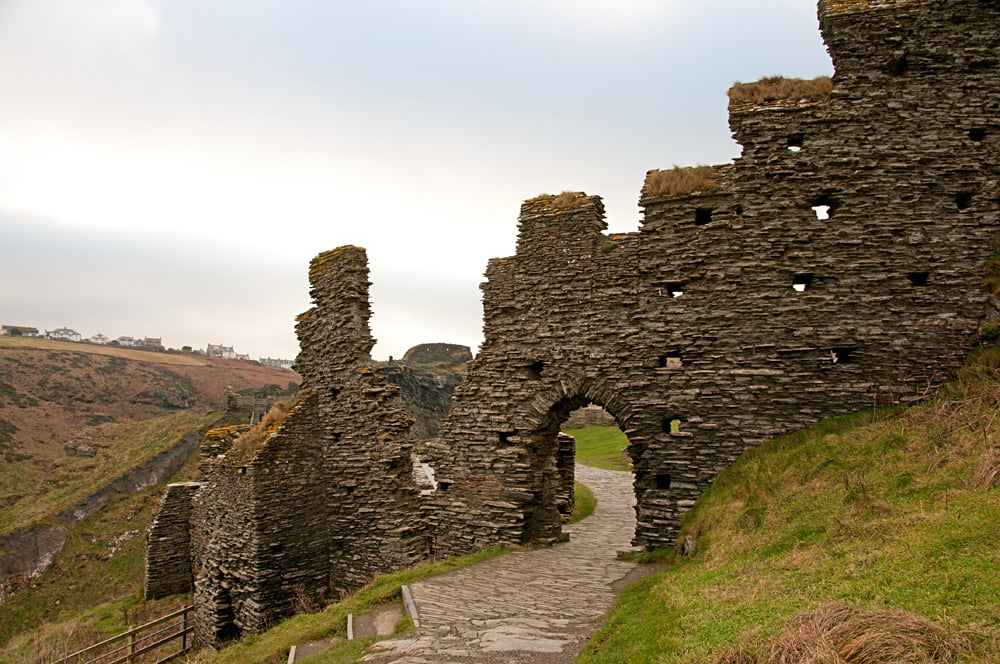
All these stately homes and castles are waiting for you to explore on your next England tour.
For more information or travel ideas for England, please visit us at www.goway.com.
Get more travel inspiration by email.
Subscribe
0 Comments

Get the latest travel trends & hear about the best deals on vacations around the world.
If you’re a Globetrotter, these are the newsletters for you!



